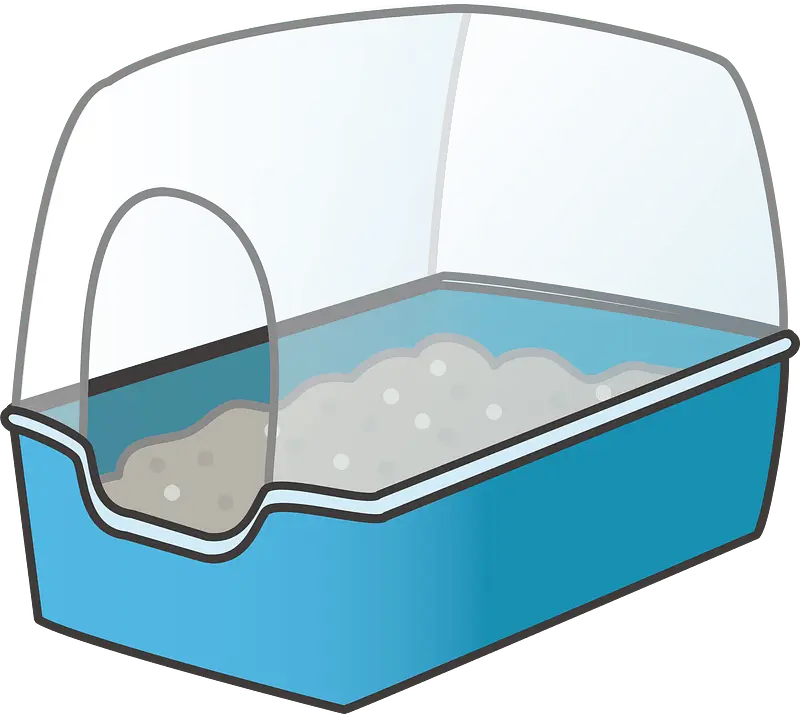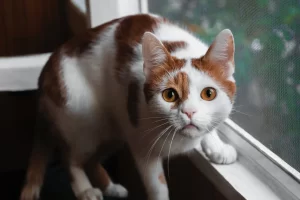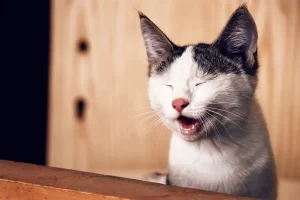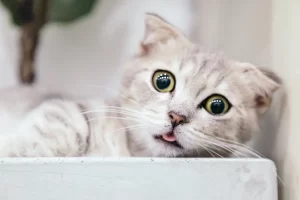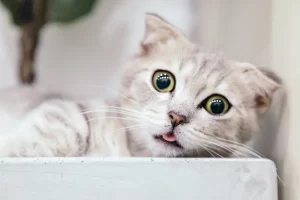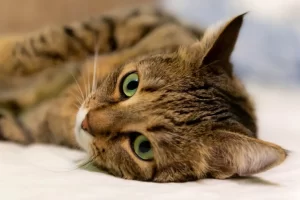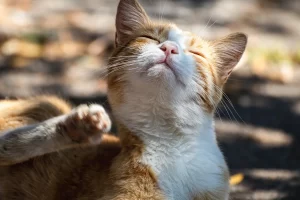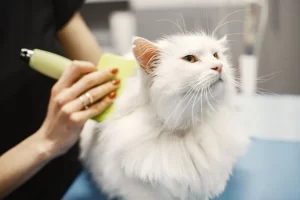As a responsible cat owner, it’s important to provide your furry friend with the best possible care, including the right type of cat litter for their specific needs. For cats with urinary problems, choosing the best cat litter is crucial to help prevent and manage their condition. With so many options available on the market, finding the right cat litter can be overwhelming. In this article, we will explore the best cat litter for urinary problems and provide pet owners with practical tips on how to choose and use the right litter for their cat’s health and well-being.
Table of Contents
ToggleBest Cat Litter for Urinary Problems
If your cat has urinary problems, choosing the right cat litter can be crucial for their health and comfort. Here are some of the best cat litters for urinary problems:
- Elsey’s Precious Cat Ultra: This is a popular choice among cat owners and veterinarians alike. It is a clumping litter that is designed to be low in dust and hypoallergenic. It also contains no perfumes or deodorants, making it a good choice for cats with sensitive skin. One of the benefits of this litter is that it is very effective at controlling odors, which is especially important if your cat has urinary issues. It is suitable for all cats, but may be especially helpful for cats with respiratory issues or skin sensitivities. No special accessories are required, but some owners prefer to use a litter mat to catch any tracking.
- Yesterday’s News: This is a non-clumping litter made from recycled paper pellets. It is very absorbent and helps control odors. It is also dust-free and gentle on your cat’s paws. One of the benefits of this litter is that it is environmentally friendly and biodegradable. It may be a good choice for cats who are sensitive to dust or who have had respiratory issues in the past. Since it doesn’t clump, it may require more frequent scooping. No special accessories are required, but some owners prefer to use a litter box liner for easy cleanup.
- Feline Pine: This is a natural pine litter that is biodegradable and contains no harsh chemicals. It is also low in dust and helps control odors. One of the benefits of this litter is that it is made from renewable resources and is eco-friendly. It may be a good choice for cats who are prone to allergies or who have sensitive skin. Since it is not a clumping litter, it may require more frequent scooping. No special accessories are required, but some owners prefer to use a litter scoop with wider slots to easily sift out the sawdust that is created as the litter breaks down.
- Tidy Cats Breeze: This is a unique litter system that uses pellets instead of traditional litter. The pellets are designed to be non-tracking and non-clumping, and they help control odors. The system also includes a special litter box that allows urine to pass through to a pad below, which helps keep the litter dry and clean. One of the benefits of this system is that it is very easy to clean and maintain, and there is minimal dust or tracking. It may be a good choice for cats who are picky about litter texture or who have had urinary tract issues in the past. The system requires a specific litter box and pads, which may be more expensive than traditional litter. Some owners also recommend using a litter mat to catch any stray pellets.
- Arm & Hammer Clump & Seal Platinum: This is a clumping litter that is designed to be highly absorbent and long-lasting. It is also infused with baking soda to help control odors. One of the benefits of this litter is that it forms tight clumps that are easy to scoop, reducing the amount of litter that needs to be replaced. It may be a good choice for multi-cat households or for cats who tend to urinate heavily. However, since it is a clay litter, it may be dusty and not ideal for cats with respiratory issues. No special accessories are required, but some owners prefer to use a litter mat or litter box liner.
- Blue Buffalo Naturally Fresh: This is a clumping litter made from walnut shells. It is biodegradable and free of harsh chemicals. It is also highly absorbent and helps control odors. One of the benefits of this litter is that it is eco-friendly and made from renewable resources. It may be a good choice for cats who are prone to allergies or who have sensitive skin. Since it is made from walnut shells, it has a natural texture that some cats may prefer. No special accessories are required, but some owners recommend using a litter mat to catch any stray litter.
- Purina Tidy Cats Free & Clean: This is a clumping litter that is made without fragrances, dyes, or fillers. It is designed to be low in dust and gentle on your cat’s paws. It is also highly absorbent and helps control odors. One of the benefits of this litter is that it is free of potential irritants that may cause allergies or skin sensitivities. It may be a good choice for cats with sensitive skin or respiratory issues. No special accessories are required, but some owners prefer to use a litter mat or litter box liner.
- ökocat Super Soft: This is a natural litter made from wood fibers that is designed to be soft on your cat’s paws. It is also highly absorbent and helps control odors. One of the benefits of this litter is that it is eco-friendly and biodegradable. It may be a good choice for cats who are sensitive to traditional clay litters or who prefer a softer texture. No special accessories are required, but some owners recommend using a litter mat to catch any tracking.
- Fresh Step Advanced Clean Paws: This is a clumping litter that is designed to be low in dust and help keep your cat’s paws clean. It is also highly absorbent and helps control odors. One of the benefits of this litter is that it contains activated carbon to help eliminate odors. It may be a good choice for cats who tend to track litter outside of the litter box or who have had urinary tract issues in the past. No special accessories are required, but some owners prefer to use a litter mat or litter box liner.
- sWheat Scoop Multi-Cat: This is a clumping litter made from wheat that is designed to be highly absorbent and low in dust. It is also eco-friendly and biodegradable. One of the benefits of this litter is that it forms strong clumps that are easy to scoop, reducing the amount of litter that needs to be replaced. It may be a good choice for multi-cat households or for cats who tend to urinate heavily. No special accessories are required, but some owners recommend using a litter scoop with wider slots to easily sift out the wheat kernels.
Understanding Feline Urinary Problems
Understanding feline urinary problems is crucial for pet owners to select the best cat litter for their cat’s needs. There are several types of urinary problems that cats can experience, including:
- Urinary tract infections (UTIs): UTIs are bacterial infections that can affect any part of the urinary tract, including the bladder, urethra, and kidneys. Symptoms of UTIs in cats include frequent urination, straining to urinate, and blood in the urine.
- Bladder stones: Bladder stones are small mineral deposits that form in the bladder. They can cause discomfort, pain, and difficulty urinating.
- Feline idiopathic cystitis (FIC): FIC is a condition that causes inflammation in the bladder, leading to painful urination and frequent urination. The exact cause of FIC is unknown, but stress is believed to play a significant role.
- Urethral obstruction: Urethral obstruction is a severe and potentially life-threatening condition that occurs when a cat’s urethra becomes blocked, preventing urine from passing out of the body. Male cats are more prone to this condition than females. Symptoms of urethral obstruction include difficulty urinating, vomiting, lethargy, and loss of appetite.
When choosing a cat litter for a cat with urinary problems, pet owners should consider the type of urinary problem their cat is experiencing. Some cat litters are better suited for certain types of urinary problems than others. For example, cats with UTIs may benefit from a cat litter that is gentle on the urinary tract, while cats with bladder stones may need a litter that can prevent the formation of mineral deposits in the bladder. Ultimately, understanding the type of urinary problem your cat is experiencing is crucial for selecting the best cat litter for their needs.
Causes of Urinary Problems in Cats: Understanding the Factors
Understanding the underlying causes of urinary problems in cats is crucial for preventing and managing these issues. Here are some of the factors that can contribute to urinary problems in cats:
- Diet: A cat’s diet can play a significant role in their urinary health. Feeding a diet that is high in minerals, particularly magnesium and phosphorus, can increase the risk of developing urinary problems such as bladder stones. Additionally, feeding a diet that is low in moisture can also increase the risk of urinary problems, as it can lead to concentrated urine and the formation of crystals.
- Age: As cats age, they become more prone to urinary problems. This is because older cats may have weakened bladder muscles or may develop underlying health conditions that can affect their urinary health.
- Breed: Certain cat breeds, such as Siamese and Persians, are more prone to urinary problems than others. This is because these breeds are more likely to develop certain health conditions, such as bladder stones and urinary tract infections.
- Gender: Male cats are more prone to urinary problems than females. This is because male cats have a longer, narrower urethra, which can make them more prone to blockages.
- Stress: Stress can also play a significant role in urinary problems in cats. Cats that are stressed or anxious may be more prone to developing urinary problems, such as Feline Idiopathic Cystitis (FIC).
By understanding these underlying causes, pet owners can take steps to prevent and manage urinary problems in their cats. This may include feeding a diet that is low in minerals and high in moisture, providing plenty of water and litter boxes, and managing their cat’s stress levels. Additionally, regular veterinary check-ups and preventative care can help identify and address any underlying health conditions that may affect a cat’s urinary health.
Exploring Cat Litter Types for Cats with Urinary Problems
When it comes to choosing the best cat litter for a cat with urinary problems, pet owners should consider the different types of cat litter available. Here are some of the most common types of cat litter and their suitability for cats with urinary problems:
- Clay litter: Clay litter is one of the most common types of cat litter and is made from bentonite clay. It is highly absorbent and clumps together when wet, making it easy to clean. However, clay litter can be dusty and may not be suitable for cats with respiratory problems. Additionally, some clay litters may be too rough for cats with sensitive paws or urinary tract issues.
- Silica gel litter: Silica gel litter is made from small, porous beads that absorb urine and odor. It is low-dust and non-toxic, making it suitable for cats with respiratory issues. However, silica gel litter may not be as absorbent as other types of litter and may not be suitable for cats with severe urinary problems.
- Biodegradable litter: Biodegradable litter is made from natural materials, such as corn, wheat, or paper. It is low-dust and non-toxic, making it suitable for cats with respiratory issues. Additionally, biodegradable litter is often more absorbent than clay litter and is gentle on sensitive paws. However, some biodegradable litters may not clump well and may not be as effective at controlling odor.
- Crystal litter: Crystal litter is made from small, clear beads that absorb urine and odor. It is low-dust and non-toxic, making it suitable for cats with respiratory issues. Additionally, crystal litter is highly absorbent and can last longer than other types of litter. However, crystal litter can be expensive and may not be suitable for cats with severe urinary problems.
- Pellet litter: Pellet litter is made from compressed sawdust or paper. It is low-dust and non-toxic, making it suitable for cats with respiratory issues. Additionally, pellet litter is highly absorbent and can be effective at controlling odor. However, some pellet litters may not clump well and may be too rough for cats with sensitive paws or urinary tract issues.
Ultimately, the best cat litter for a cat with urinary problems will depend on the type of urinary problem they are experiencing and their individual preferences. Pet owners should consider their cat’s specific needs and consult with their veterinarian before choosing a cat litter.
Choosing the Right Cat Litter for Your Cat’s Urinary Needs
Choosing the right cat litter for a cat with urinary problems is an important consideration for pet owners. Here are some practical tips to help pet owners choose the right cat litter for their cat’s needs:
- Consult with a veterinarian: Before choosing a cat litter, it’s important to consult with a veterinarian to determine the type of urinary problem your cat is experiencing. Depending on the underlying condition, your veterinarian may recommend a specific type of cat litter or suggest avoiding certain types of litter.
- Consider the cat’s comfort: Some cats may have sensitive paws or prefer a certain texture of litter. It’s important to choose a litter that is comfortable for your cat to use. If your cat has urinary problems, they may be more likely to avoid the litter box if the litter is uncomfortable for them.
- Look for low-dust litter: Dust from cat litter can irritate a cat’s respiratory system and exacerbate respiratory problems. Choosing a low-dust litter can help reduce dust exposure for cats with respiratory issues.
- Consider litter absorbency: Cats with urinary problems may produce more urine than usual or have difficulty controlling their urine flow. Choosing a litter that is highly absorbent can help manage these issues and reduce the risk of accidents outside of the litter box.
- Avoid scented litter: Scented cat litter may be appealing to humans, but it can be overwhelming for cats and may deter them from using the litter box. Additionally, scented litter can be irritating to cats with respiratory issues or sensitive skin.
- Monitor litter box usage: Once a new litter has been introduced, it’s important to monitor your cat’s litter box usage to ensure they are comfortable with the litter and are not experiencing any adverse reactions. If your cat is avoiding the litter box or displaying other signs of discomfort, it may be necessary to switch to a different type of litter.
By following these practical tips, pet owners can choose a cat litter that is suitable for their cat’s urinary problems and promotes their overall health and wellbeing.
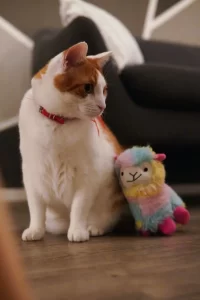
Clumping vs. Non-Clumping Cat Litter: Which is Best for Urinary Problems?
Clumping cat litter and non-clumping cat litter are two main types of cat litter available on the market. Each type has its own unique features and benefits that may be more or less suitable for cats with urinary problems.
Clumping cat litter is made from materials such as clay, silica gel, or plant-based materials. When a cat urinates on clumping litter, the liquid is absorbed, and the litter forms a solid clump that can be easily removed from the litter box. This type of litter is convenient to use because it is easy to scoop and can help control odors. However, some clumping cat litters may contain ingredients such as sodium bentonite that can cause health problems in cats with urinary issues. Additionally, clumping cat litter can be dusty, which may cause respiratory issues for cats with respiratory problems.
Non-clumping cat litter, on the other hand, is made from materials such as recycled paper, wood shavings, or plant-based materials. This type of litter is usually less dusty than clumping litter and may be more suitable for cats with respiratory issues. Non-clumping litter does not form clumps when a cat urinates, so it needs to be completely replaced more frequently than clumping litter. However, non-clumping litter can be more absorbent than clumping litter, which can be beneficial for cats with urinary problems.
When choosing between clumping and non-clumping litter for a cat with urinary problems, there are several factors to consider. Clumping litter may be more convenient for pet owners and may be less expensive in the long run, but it can also pose health risks for cats with urinary problems. Non-clumping litter may be more expensive and require more frequent replacement, but it may be safer and more comfortable for cats with urinary issues. Ultimately, the choice between clumping and non-clumping litter will depend on the specific needs and preferences of the cat and their owner. Pet owners should consult with their veterinarian to determine which type of litter is best for their cat’s specific urinary problems.
Effective Odor Control for Cats with Urinary Problems
Odor control is a significant concern for cat owners, especially those with cats that have urinary problems. The smell of cat urine can be potent and overwhelming, making it essential to choose a cat litter that effectively controls odors.
There are different odor control options available in cat litter, including scented and unscented litters, as well as litters with odor-neutralizing agents. Scented litters can be effective in masking odors, but they may contain strong fragrances that can irritate cats with respiratory problems. Unscented litters are generally safer for cats, but they may not be as effective in controlling odors.
Litters with odor-neutralizing agents work by absorbing and neutralizing odors rather than masking them with fragrances. These litters can be effective in controlling the odor of cat urine, but pet owners should choose products that use safe and natural odor-neutralizing agents. Some common odor-neutralizing agents used in cat litter include baking soda, activated charcoal, and zeolite.
When choosing a cat litter for a cat with urinary problems, pet owners should also consider litter box hygiene. Scooping the litter box daily and completely replacing the litter regularly can help control odors and prevent the growth of harmful bacteria that can exacerbate urinary problems.
In conclusion, choosing a cat litter with effective odor control is crucial for cat owners, particularly those with cats with urinary problems. Pet owners should choose litters that use safe and natural odor-neutralizing agents, maintain good litter box hygiene, and consult with their veterinarian to ensure they are using the right type of litter for their cat’s specific urinary problems.
Safe and Effective Dust Control for Cats with Urinary Problems
Dust control is another essential consideration for cat owners, especially those with cats that have urinary problems. Dust from cat litter can cause respiratory problems in cats, such as coughing, wheezing, and sneezing, making it important to choose a litter with effective dust control.
There are different dust control options available in cat litter, including low-dust and dust-free litters. Low-dust litters are designed to produce less dust than traditional litters, but they may not be entirely dust-free. Dust-free litters, on the other hand, are formulated to eliminate dust entirely and can be a good option for cats with respiratory problems.
However, some dust-free litters are made from materials that can be harmful to cats if ingested, such as silica gel or clay. Therefore, it’s essential to choose a dust-free litter that is made from safe and natural materials, such as recycled paper, wheat, corn, or wood.
It’s also important to note that some cats may prefer the texture and feel of traditional clay litter and may not be willing to switch to low-dust or dust-free litters. In this case, pet owners can try gradually transitioning their cats to a new litter by mixing the old and new litters together and gradually increasing the amount of the new litter.
Natural Cat Litter Options for Cats with Urinary Problems
Natural cat litter options are becoming increasingly popular among pet owners who are concerned about the environmental impact of traditional cat litter. These litters are made from natural, biodegradable materials and are typically free of synthetic fragrances, dyes, and other potentially harmful chemicals.
Some natural cat litter options include:
- Pine litter: Pine litter is made from compressed sawdust and is biodegradable and renewable. It has natural odor control properties and can absorb moisture effectively.
- Corn litter: Corn litter is made from the dried kernels of corn and is biodegradable, renewable, and flushable. It has excellent clumping properties and is an excellent choice for cats with urinary problems.
- Wheat litter: Wheat litter is made from ground wheat and is biodegradable and renewable. It clumps well and has good odor control properties.
- Paper litter: Paper litter is made from recycled paper and is biodegradable and renewable. It is typically dust-free and can be an excellent choice for cats with respiratory problems.
It’s important to note that natural litters may have different properties than traditional litters and may require some adjustment for cats and their owners. For example, pine litter may have a strong odor that some cats may not like, and paper litter may not clump as well as traditional litter.
Avoiding Common Cat Litter Mistakes for Urinary Problems
- Using scented litter: Scented litters may contain perfumes or chemicals that can irritate a cat’s urinary tract, causing discomfort or even infection. It’s best to choose unscented litters or litters with natural, mild fragrances.
- Not cleaning the litter box regularly: A dirty litter box can increase the risk of urinary tract infections and other health problems. It’s important to clean the litter box at least once a day and replace the litter regularly.
- Not providing enough litter boxes: Cats can be picky about their litter box habits, and not providing enough litter boxes can lead to inappropriate elimination and urinary problems. As a general rule, there should be one litter box per cat, plus one extra.
- Choosing the wrong type of litter: Different types of litter may be more suitable for different cats and their specific urinary problems. It’s important to research and choose the right type of litter based on the cat’s needs.
- Not providing enough litter depth: Cats prefer to dig and cover their waste, and not providing enough litter depth can cause discomfort and may discourage proper litter box use. The litter should be at least 2-3 inches deep.
- Using dirty scoops or litter boxes: Dirty scoops or litter boxes can harbor bacteria and increase the risk of urinary tract infections. It’s important to clean and disinfect scoops and litter boxes regularly.
- Not seeking veterinary care for urinary problems: Urinary problems in cats can be serious and may require veterinary care. Delaying or avoiding treatment can lead to more severe health problems and even life-threatening conditions.
Frequently Asked Questions (FAQs) about Best Cat Litter for Urinary Problems
What is the best cat litter for cats with urinary problems?
The best cat litter for cats with urinary problems is typically a low-dust, unscented, and clumping litter that is gentle on the cat’s sensitive urinary tract.
What are the common causes of urinary problems in cats?
Urinary problems in cats can be caused by a variety of factors, including diet, age, breed, gender, and stress.
How can I prevent urinary problems in my cat?
You can prevent urinary problems in your cat by providing them with a balanced diet, plenty of water, and a clean litter box. Regular veterinary check-ups can also help identify any underlying health issues.
Is clumping litter safe for cats with urinary problems?
Clumping litter can be safe for cats with urinary problems, as long as it is low-dust, unscented, and made from a non-toxic material such as clay or corn.
What is non-clumping litter, and is it suitable for cats with urinary problems?
Non-clumping litter is made from materials such as paper, wood, or plant-based fibers and is less likely to irritate a cat’s sensitive urinary tract. It can be a suitable option for cats with urinary problems, but it may require more frequent changing.
Can scented litter be harmful to cats with urinary problems?
Scented litter can be harmful to cats with urinary problems because the fragrances can irritate their sensitive urinary tract. It is best to choose an unscented litter instead.
Are natural cat litters safe for cats with urinary problems?
Natural cat litters made from materials such as corn, wheat, or wood can be safe for cats with urinary problems, as long as they are low-dust, unscented, and made from non-toxic materials.
How often should I change my cat’s litter to prevent urinary problems?
It is recommended to change your cat’s litter at least once a week to prevent urinary problems. For cats with urinary issues, more frequent changing may be necessary.
Can crystals in cat litter cause urinary problems in cats?
Crystals in cat litter can sometimes cause urinary problems in cats, particularly if the cat has a history of urinary issues. It is best to choose a litter without crystals or consult with a veterinarian.
Should I choose a lightweight or heavy cat litter for a cat with urinary problems?
Lightweight litter may be more convenient for the owner, but it may not provide enough traction for a cat with urinary problems. Heavy litter can be more suitable for these cats.
How important is it to choose a low-dust cat litter for cats with urinary problems?
It is important to choose low-dust cat litter for cats with urinary problems because dust particles can irritate their sensitive urinary tract and cause respiratory issues.
Can I use recycled paper cat litter for cats with urinary problems?
Recycled paper cat litter can be a safe and effective option for cats with urinary problems, as long as it is low-dust, unscented, and made from non-toxic materials.
Can I mix different types of cat litter for a cat with urinary problems?
Mixing different types of cat litter can be confusing and uncomfortable for the cat. It is best to stick to one type of litter that is suitable for their urinary issues.
Should I choose a covered or uncovered litter box for a cat with urinary problems?
An uncovered litter box can provide better ventilation and reduce the risk of urinary infections. It can also make it easier for the owner to monitor the cat’s urine output.
What is the difference between clumping and non-clumping cat litter, and which one is better for cats with urinary problems?
Clumping litter forms solid clumps around urine, making it easier to scoop out waste and keep the litter box clean. Non-clumping litter does not clump, but instead absorbs moisture and odor. In general, clumping litter is recommended for cats with urinary problems because it allows for easier monitoring of urine output and helps detect any changes in urine color, consistency, or frequency. However, some non-clumping litters can also be suitable if they offer good absorbency and odor control.
Is natural cat litter better for cats with urinary problems than traditional clay-based litter?
Natural cat litter options, such as those made from recycled paper, wood, or corn, can be safer and more environmentally friendly than traditional clay-based litters. However, the suitability of natural litters for cats with urinary problems may vary depending on the type of litter and the specific needs of the cat. Some natural litters may not be as absorbent or effective at controlling odors as clay-based litters, while others may contain substances that could irritate a cat’s sensitive urinary tract.
What are the most important factors to consider when choosing cat litter for a cat with urinary problems?
The most important factors to consider when choosing cat litter for a cat with urinary problems are absorbency, dust control, odor control, and the cat’s personal preference. A litter that offers good absorbency can help prevent urine pooling, while dust-free litters can reduce the risk of respiratory problems. Litters with effective odor control can help prevent bacterial growth and unpleasant smells, while the cat’s preference can encourage regular use of the litter box.
Can scented cat litter be harmful to cats with urinary problems?
Scented cat litter can contain chemicals or fragrances that may irritate a cat’s sensitive urinary tract, causing inflammation, discomfort, or even infections. Therefore, it is generally not recommended to use scented cat litter for cats with urinary problems. Instead, unscented or lightly-scented litters may be a better option, as they are less likely to cause adverse reactions.
How often should cat litter be changed for cats with urinary problems?
Cat litter should be changed frequently for cats with urinary problems, ideally on a daily basis or as needed. Cats with urinary problems may produce more urine or have difficulty urinating, which can cause the litter to become saturated or clumpy faster than usual. Changing the litter regularly can help prevent bacterial growth, odor buildup, and discomfort for the cat.
Can clumping cat litter be harmful if ingested by cats with urinary problems?
Ingesting clumping cat litter can be harmful to cats with urinary problems, as it can cause intestinal blockages or other digestive issues. Clumping litter is designed to expand and solidify upon contact with moisture, which can lead to clumps forming in the digestive tract if the cat ingests the litter while grooming. Therefore, it is important to choose a cat litter that is safe and non-toxic if accidentally ingested, and to monitor the cat’s litter box use and grooming habits.

